Refined, Restyled, Sonata Remains Midsize Icon
Filed under: Equinox, Weekly test drives, Autos
By John Gilbert
When Hyundai redesigned its midsize Sonata for the 2011 model year, a trusty and useful caterpillar was transformed into a stunning and award-winning butterfly, and the overall success of the Sonata gave the South Korean company an instant signature vehicle.
Boasting a sketchpadful of curvaceous contours, it also was blessed with new levels of high-grade steel — from its own steel plant — for lightness without compromising safety, and an all-new 2.4-liter 4-cylinder engine that bristled with sporty power, thanks to a futuristic high-pressure/low-temperature but costly direct injection system. Hyundai hooked it up to its own corporate 6-speed automatic transmission that was built in-house and was lighter and smaller than the less-efficient aftermarket 5-speed transmissions used by other companies.
All those features gave the Sonata a technical edge on its competition almost before suddenly the Accord, Camry, Mazda6, Fusion, Malibu and Altima knew that more than midsize room and sportiness were being challenged. Despite the edge in technology and fuel efficiency, the Sonata also came in several thousand dollars lower in sticker price. As if to prove that everything could be star-crossed into one vehicle, the 2011 Sonata was U.S. built, in a new plant in Montgomery, Ala., while its engine plant was 50 miles up the freeway.
I thought the Sonata was the most significant car introduced for 2011, and I mentioned to a Hyundai engineer back then that the car had all the ingredients to be the perfect contemporary vehicle. The only thing lacking, I suggested, was in steering and suspension, both for firmer handling, and also because they could be coordinated for the true sporty handling the car deserved. Those would be the toughest achievements, and take the longest to attain.
Still, self-teaching itself to create the ingredients was substantial enough that Hyundai could spread its new-found technical wealth around to its other vehicles. Within a couple of years, all its smaller 4s, larger V6es, and new V8s benefitted by direct injection and the in-house transmission.
A new entry-luxury Genesis was another part of Hyundai’s upsurge, which is a factor in the new-for-2015 scenario. A thoroughly renovated Genesis has just arrived for 2015, with smoothly flowing refinement and the proper room and features of a luxury sedan, with proper handling, having learned a few suspension tricks from consultation with Lotus engineers. It all works amazing well.
But before anyone could suggest the bargain-luxury Genesis had become Hyundai’s new signature model, the redesigned 2015 Sonata arrived. On the outside, the Sonata trades in the polarizing contours for a more formal look, which Hyundai calls “Fluidic Sculpture.” The new Sonata actually resembles the new Genesis more than it does the outgoing Sonata, leaving those curvy contours to remain distinctive for the 2011-14 Sonata, and replacing them with sweeping lines and a new, upright, Genesis-like grille.
“Instead of adding more flair, we put straighter lines on the sides, so it looks more like an athlete in a tight suit,” said Christopher Chapman, chief designer of the car.
The resemblance is striking if you park a Sonata alongside a Genesis. You could easily mistake one for the other, although the Genesis never looks like a bargain-priced midsize, even if the new Sonata takes on entry-luxury stature. Inside, the Sonata’s interior has been refined and restyled to appeal to every taste. But the real trick is underneath that exterior and interior.
Hyundai will never say that Lotus helped design the suspension of the new Genesis, but from vastly tightened and responsive steering and the far more coordinated suspension of both cars, we can theorize that Hyundai engineers applied some Lotus ideas to the rear-drive Genesis, then reconfigured it to revolutionize the front-wheel-drive Sonata’s feel.
In the corporate scheme of things, Kia gets joint-venture use of Hyundai engines and transmissions. Kia builds the Optima, a very slick parallel to the Sonata. The Optima has always had the benefit of more sporty touches, while the Sonata has been more, uh, pedestrian.
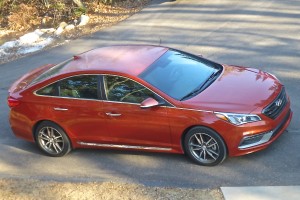 But the new Sonata, which starts with the same reliable and peppy 2.4-liter 4 standard, adds a couple of variants for 2015. A Sport version has the reduced-displacement 2.0-liter engine, which is turbocharged and direct-injected for a large boost in power, and the 6-speed automatic gets steering-wheel paddle controls for manual shifting. The steering wheel has a flat-bottom shape, similar to the Volkswagen Golf GTI, for those who might not push the Sonata Sport hard enough to appreciate its improved dynamics.
But the new Sonata, which starts with the same reliable and peppy 2.4-liter 4 standard, adds a couple of variants for 2015. A Sport version has the reduced-displacement 2.0-liter engine, which is turbocharged and direct-injected for a large boost in power, and the 6-speed automatic gets steering-wheel paddle controls for manual shifting. The steering wheel has a flat-bottom shape, similar to the Volkswagen Golf GTI, for those who might not push the Sonata Sport hard enough to appreciate its improved dynamics.
In addition, the Sonata is offered with Hyundai’s very peppy little 1.6-liter 4, lifted from the Accent, Elantra, and even the newly revised Tucson SUV in a hyper-economy model. Turbocharging makes it more than just an economy car. In a matter of weeks, Hyundai also will present a new hybrid Sonata.
After driving several models at the Sonata introduction, I spent a week with a glistening white Sonata Limited, and more recently was able to spend a week with a Sonata Sport. It was a unique off-red color, called “urban sunset,” and it came with the 2.0 turbocharged engine that produces 245 horsepower at 6,000 RPMs, and 260 foot-pounds of torque, which is not only a lot of punch, but peaks and remains constant all the way from 1,350 to 4,000 RPMs.
The car carved through curves and tight corners with precision, amplified by the paddle-shifting, which gives the Sonata part of its new personality. Greatly appreciated, too, is the coordination between the refined power steering and the new suspension — both tweaked to sport settings.
With stability management and traction control, the latest brake-force distribution and brake assist, plus all the high-tech features, such as blind-spot detection, rear cross-traffic alert, leather seats, automatically dimming rearview mirror, and Bluetooth and Blue Link connectivity, the Sonata Sport listed at $29,510. Definitely a bargain, considering the features and refinement contained within.
“More horizontal architectural lines create the reality of more control,” said Chapman, inadvertently describing the juncture of appearance with reality. “It’s built with safety, but it’s intuitive and comfortable while being safe. If we can turn safety into something sexy, the whole industry will be better off.”
Hard to quarrel with that. It’s all part of living up to its new image, although the explanation, impressive as it is, might still fall short of explaining how the previous generation Sonata had all the ingredients to be a great car, while the new one puts all those ingredients in place to reach that plateau of being a truly great car.
Discovery Sport Too Cool for Iceland
Filed under: Equinox, Features, Autos
By John Gilbert
REYKJAVIK, Iceland
Often when you take a trip, the proper cliche is “getting there is half the fun.”
Not this time. When Land Rover invited auto journalists for a first test-drive of its new Discovery Sport, it chose Iceland. Maybe I was the only person in snowy and icy Minnesota to be excited about making a January trip to snowy and icy Iceland, but being there was ALL the fun. Only a weather-delayed flight proved disappointing, compressing my group’s time from three days to two.
To be the trip’s prime attraction, the Discovery had to compete with amazing visual sights that included primitive roadways, a lack of traffic, towns, and alternative routes. There was not a lot of snow, and, by the way, not a single day from January through March passed when Reykjavik didn’t have warmer temperatures than Duluth, Minnesota.
After finally arriving in Iceland’s main city, where about three-fourths of the country’s less-than half-million people reside, we checked in at the Design Hotel 101 in downtown Reykjavik, but didn’t have time to unpack. We were fitted with “66-degreeNorth” down jackets, gloves, hats, and other severe-weather-beating apparel, just in case, and then we were off to the product presentation. Promptly, we hit the road for the designated circuit of several hundred miles on mostly narrow, 2- lane roads that passed by mountains, volcanos, hot-spring pools, and terrain that includes tectonic plates, which shift every year and are gradually splitting Iceland in a equally toward North America on the west and Scandinavia on the east.
At one point, we seemed to be bunched up, caravan-style, at an outpost. A Land Rover guide explained the fissure between tectonic plates that are causing gradual continental split dividing Iceland. He added that the roadway ahead was clear, and with studded tires mounted, we should try to pick up the pace to 60 miles per hour or so. Easily done.
The ideal way to tour the rugged countryside proved to be the Discovery Sport. It is the entry-level compact SUV from Land Rover, a British company that builds larger and more luxurious engineering marvels under the names Range Rover, Evoque, Defender, LR-4, and previously the LR-2, which will be supplanted by the Discovery.
The company, formerly owned by Ford, is now owned along with Jaguar by Tata Motors in India. But it’s never lost its identity, nor its pride in building the most capable off-road vehicles without ever compromising on comfort, safety and luxury.With the top Range Rovers listing for nearly $150,000, it is impressive to see how the company combines all those standards into a Land Rover Discovery that starts out at $38,000. Regardless of price or perceived stature, the Discovery Sport over-achieved in every way, no matter how desolate the roadways.
At another outpost, we were ordered to turn left, down a bank toward the Hvita River, rushing along between the rare connection of two parallel roads. We were crossing, hood-deep in rushing, chilly water, to prove the Discovery Sport’s 24-inch wading capability. No problem.
As vehicle program director for Discovery 4, Paul Cleaver has been with the car since the first sketches and clay models. “I’ve taken it from the early concept stage with designers, to production,” said Cleaver. “It’s absolutely like giving birth. The proudest moment of my life was the birth of my son, Archie, and the second proudest is the birth of this Discovery Sport.”
Tata is based in India, but it has left Land Rover, and cousin Jaguar, with well-financed backing to stay in England. “This is the entry level Land Rover product. This is a lot smaller than the LR-4, but the space in the interior shows the team has done a fantastic job of versatility,” said Cleaver. “The third row and the sliding second row are class-leading. I think we’re the best now at making the exterior compact but having a large interior space.”
The class-leading interior volume includes a second row that slides 6.3 inches, and reclines. There is 27.8 cubic feet of storage behind the third seat, or 31.75 cubic feet with the third seat folded, or up to 60 cubic feet with both seats folded.
The Discovery Sport has permanent all-wheel drive, and, Cleaver explained, Land Rover has engineered a new rear suspension system to strike a balance between on-road dynamics and off-road capability, yet still provide the driver with all sorts of comfort. Designed from scratch, the rear suspension has a unique integral link and an aluminium lower control arm.
For a powertrain, Land Rover borrowed from its more-luxurious brother, the Evoque, and uses the same 2.0-liter turbocharged 4-cylinder engine which came from Ford, Land Rover’s previous owner. It develops 240 horsepower, and its 9-speed ZF automatic transmission is at its best swapping gears for optimum ratios mid-range, with top gear designed for highway cruising, and first gear aimed at serious off-roading. The Discovery Sport will hit a 125-mph top speed, and still deliver 28 miles per gallon highway, with an EPA estimated 23 mpg combined city-highway.
Structurally, Discovery Sport also borrowed from the Range Rover Evoque, using a steel monococque body, with aluminum — “aluminium” to the Brits — in selected areas, such as the bonnet (hood), roof, and tailgate, and magnesium cross beams are used for strength and reduced weight, compared to the high-strength and ultra-high-strength steel of the rest of the structure.
Before I ever laid eyes on the Discovery Sport, the trip was certainly an adventure. It was going to be long, flying from Duluth, MN., to Minneapolis, then to Toronto, from where I would board an IcelandAir flight to Reykjavik. It got suddenly longer when I was contacted by Land Rover officials who said the trip would be delayed because a winter storm would prevent any aircraft from landing in Iceland for 24 hours. Everybody else in my group was connecting through Boston, so I was alone camping out in the Toronto Airport Sheraton’s fine accommodations, because the one-flight-per-day trip to Iceland wouldn’t depart until 7:30 p.m. the following day. I envisioned a snowstorm that only a Minnesotan might appreciate burying Iceland, but it turned out there was very little snow — just winds blowing at up to 100 miles per hour from west to east across Iceland, eliminating any possibility of seeing across the country, much less landing from the sky.
Once on the road, I was surprised we saw no wildlife, and I asked a resident if there was any. “Horses,” he said. I told him back in Minnesota, we didn’t refer to fenced-in horses as wildlife. “And some foxes and mink,” he added. We never saw any, but, whatever, the lack of traffic and wildlife was offset by breathtaking scenery, everywhere we looked.
We paused at another road-side stop, where another Land Rover guide in another aging but beautiful Range Rover Defender awaited us. Ahead, off to the left in the fading sunlight, was a magnificent white mountain peak. “That’s the Baula Volcano,” he said. “It’s so well-known that the road you’re on is called Volcano Road.”
The models we test-drove were all loaded up with features, and were priced at about $45,000. The HSE Luxury Pack includes expansive sunroofs, an 8-inch nav and information screen that rivals an iPad in size, and with surprisingly adequate three-row seating inside that compact silhouette. Stadium seating means those in the second row sit an inch or so higher than row 1, and row 3 sits higher than row 2, aiding visibility for the occupants. Flip a switch and the second row folds down electronically. There are seven USB charging sites, taking care of everyone, even if you squeeze in seven occupants.
The Discovery Sport proved more than worthy, even when I gave it that special test beyond anything Land Rover folks might have imagined. The experience gave me a better idea than even Paul Cleaver had about how stable and responsive their new vehicle is. Sophisticated electronic aids work seamlessly. The HDC driving command computer responds to a pitch-rate sensor that detects corners and reduces speed without driver intervention. The terrain response system has push-button control of four modes: general driving, mud and ruts, sand, and snow and ice, and also affects the electric power-assisted steering. The mode shown on the screen notes DFC or HDC, where the powertrain is directing its torque, and which direction the front wheels are pointed, which is vital in off-road driving.
Late in the drive, I was approaching a small rise on Hwy. 1, Volcano Road, going about 60 on a clear road, and I hit the rear window washer and wiper. I glanced in the rear-view mirror for a millisecond to see that the window was cleaned sufficiently, and looked back ahead. To my horror, the unmarked road atop the small rise looked a lot like a skating rink. Solid glare ice. Worse, there was an unmarked “T” intersection 100 feet ahead. I yelled to my partner: “Hang on! This isn’t going to be pretty!” Without question, I was going too fast to make the 90-degree turn, studded tires or not, but I stabbed the brake pedal hard, and edged left hoping the slightly dished left edge might help convince a tire to make the turn. It didn’t. Our Discovery Sport skidded sideways, crossed the intersection, and went almost gently right off the road. My instincts from scaling Duluth’s cliffside avenues took over, and as we settled off the intended road, I hit the gas. The responsive turbo churned straight ahead, until I could pull the steering wheel left. Amazingly, we simply climbed back up onto the road — and kept going! No damage, no break in schedule.
“Going from the clay modeling in the studio, with all the different concepts and schemes, and taking it through to production, has really been exciting,” said Cleaver, the product manager who has been with Land Rover for 20 years. “Now, to see the cars rolling around Iceland, it makes the hair stand on the back of my neck.”
Imagine if he had been riding with us!
Detroit Show Features Future and Fantasy
Filed under: Equinox, Autos
By John Gilbert
Press preview days at Detroit’s North American International Auto Show have become a battle to exhaustion of trying to find a decent vantage point for the numerous new-vehicle presentations that run about every 20 minutes for 10 hours.
At one point, Acura was about to introduce the long-awaited renewal of its NSX, which has been used to tease the media for several years now, but appears just about ready for prime-time. As I grappled briefly then yielded to the mob scene, I chose to circle around behind the back of the media cluster, trying to find a place where I could get a glimpse of the NSX, one of the most stunning and flashy sports coupes at the show, now with over 500 horsepower from the combination of its potent V6 and three electric motors. It’s a knockout hybrid, at $150,000.
Just then, someone behind me said: “Excuse me, sir, would you move? We’ve got a car coming through.” Sure enough, a car was driving along the carpeted walkway, slowly. It was daring that some manufacturer would be moving a car right near that segment of an estimated 5,000 auto journalists trying to find one of about 100 seats at the Acura display, but it was astounding when I realized what it was. It was the surprise of the show, actually — the 2016 Ford GT.
Ford had brought back a slightly enlarged version of the original GT-40 LeMans race car about a decade ago, and it was absolutely beautiful as a replica, called simply the Ford GT. They took it off its selected market in 2006. But it is coming back, and it doesn’t pretend to be a replica of the GT-40 race car any more. As it drove slowly along the walkway, the scene was almost cartoonish; it passed us and was trailed by a turbulent gang of several dozen crazed media-types, grappling for a close-enough vantage point to get an unobstructed photo of the car, chasing it all the way to the Ford display, where it would be mounted on a twirling turntable.
“That wasn’t timed to be an intentional distraction from the NSX,” said Chris Svensson, the design director of the GT and leader of the small cluster of zealots who met in a cloistered studio within the halls of Dearborn. But he had to chuckle about the coincidental good luck of the timing.
“We had a small crew, usually about six of us, never more than 12, and we had limited reviews from management,’ Svensson said. “Management had very little input on our design. It took us just over a year, and the best thing is that people keep coming up and saying, ‘Nice concept car.’ But it’s not a concept car. The car on the stand is a production car. We’ll have these in production shortly.” Read more
Mustang Stampedes into Next 50 Years
Filed under: Equinox, Autos
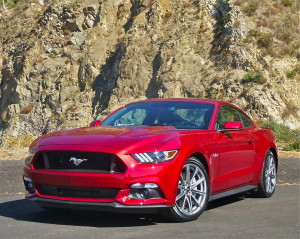
The 2015 Mustang has a lower, sleeker look covering all sorts of technical improvementsBy John Gilbert
By John Gilbert
The Ford Mustang takes the term “icon” to new dimensions. Amid very successful pickup trucks and various sedans and SUVs, the Mustang earns icon status by standing out as the very personality of Ford Motor Company. And for 2015, the Mustang takes its own image, as well as Ford’s, upward to new heights of styling, performance and technology.
The totally redone Mustang has an enormous responsibility, being the sixth generation of the car that first hit the streets of Dearborn in 1964. That’s a long time ago — 50 years ago, to be exact. And the new car seems to have reached all the high points befitting its 50th anniversary.
“Fast, fun and affordable,” is the way Mustang vehicle engineering manager Tom Barnes put it. I wasn’t sure if that was a new corporate motto or if Barnes was describing the combination of all the new Mustang’s attributes, but if it’s not the Mustang Motto, it should be. The Mustang will start in the mid-$20,000 range and run upward, depending on the restraint buyers show at the upgrade and option checklists.
Since its inception in 1964, the Mustang has grown bigger, then smaller, then almost disappeared, before being revived in the last decade as a retro model that brought everyone back to the heyday of its first and most classic years. For 2015 the evolution continues and the Mustang sets new standards as a sleeker, quicker and more maneuverable sporty coupe that is a little bit retro and a large bit contemporary, with a dose of Ford’s most futuristic EcoBoost technology.
Ford introduced its 2015 Mustang to auto media in Los Angeles, stressing it as a finished product more than simply for its improved power. But the two are intertwined impressively. Under that long and curvaceous hood you choose one of three engines. A surprising new EcoBoost 4-cylinder joins the returning V6 and the bolstered V8 in a versatile arsenal. All three engines reach or surpass 300 horsepower, yet promise economical operation through a pair of 6-speed transmissions, a Getrag manual, or the automatic, which has steering wheel paddles for a sporty touch on all applications.
The base engine is the 3.7-liter V6, with 300 horsepower and 280 foot-pounds of torque, while the top engine is the 5.0 V8, with its sophisticated chain-driven dual overhead camshaft design spinning to a whopping 435 horsepower and 400 foot-pounds of torque, with a top speed of 155 miles per hour. But the spotlight shines brightest on Ford’s newly redesigned EcoBoost 2.3-liter 4-cylinder, thoroughly upgraded and reinforced to handle the twin-scroll turbocharger’s force-fed demands. In the Mustang, it delivers 310 horsepower and an amazing 320 foot-pounds of torque. From a 4-cylinder.
“The new 2.3 has more horsepower than our V8 did 10 years ago,” said Barnes, pointing out the power is complemented by an advertised 32 miles per gallon.
“We had hundreds of people working on this Mustang for the last four years to make sure we had everything from the powertrain to the stiffer structure, to ride comfort, and to improve response and handling, as well as the appearance, inside and outside. We had a lot of input from people and a lot of debates and discussions, because we had to live up to the heritage of the car but also move forward.
“I think we absolutely nailed it.”
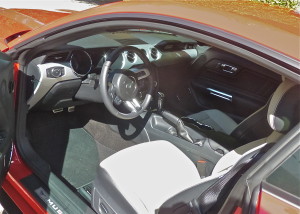
Interior choices are focused on driver’s command, and the base seats are supportive, if a cut below the GT’s Recaros.
Small engines that over-achieve always have been my preference, and the EcoBoost 2.3 proves that large displacement isn’t the only route to performance potency, while that potency and good real-world fuel-efficiency needn’t be mutually exclusive. German manufacturers such as Audi/Volkswagen, BMW and Mercedes all have 2.0 turbos as their primary base power, and the 2.3 EcoBoost proves that small-displacement, high-performing engines with great fuel economy isn’t an exclusive domain of the Germans.
When Ford first decided to go with the turbocharging technology it calls EcoBoost, it began with the 3.5-liter V6, built from the ground up to withstand the rigors of rapid surges of RPMs produced by turbocharging. The 2.3, meanwhile, first came to Ford with its smaller 2.0 brother from previous affiliate Mazda, when the two companies had some joint ventures. Refined through the years, they became known as the Duratec family of engines, with no connection to the smaller Sigma family that includes the 1.6, 1.3 and 1.0-liter units. Over the years, the Duratec as come a long way.
“The only thing this engine has in common with that original 2.3 is the placement of the cylinders and the displacement,” said Scott Makowski chief engine architect on the EcoBoost fours. “It’s pretty streamlined, with the turbocharger and direct injection mounted low, on the side, and the exhaust manifold integrated on the other side. It wasn’t cheap to do things like put a steel crank in it , but all along, we looked for anything we could do to strengthen the engine.”
That includes a die-cast (instead of sand-cast) block, and camshafts, a forged steel crankshaft, special piston rings and connecting rods, cooling jets on the aluminum pistons, and other modifications to reinforce the 2.3 for the rigors of being force-fed by the Honeywell-built turbocharger.
“We wanted 300 horsepower, and we got 310, with 320 foot-pounds of torque,” Machowski said. “We never chased horsepower at the expense of torque, and we never sacrificed gas mileage, horsepower or torque. We were able to get 240 horsepower out of it with a single-scroll turbo, with great power but no low-end. We went with the twin-scroll turbo because it has more pulses, which give faster response. Our emphasis was on getting the torque right because we knew the horsepower would come along later.
“The torque peak is 2,750 RPMs, but 90 percent of it comes in at only 1,750. The 310 horsepower means we got 137 horsepower per liter, which is one of the highest figures in the industry.”
The obvious competitors for the Mustang are the Chevrolet Camaro and the Dodge Challenger, both of which have just been reintroduced with huge power outputs. But all that power necessitates enormous pushrod engines — the. Camaro has an optional 7.0-liter V8, and the Challenger offers Hemi V8s of 6.2, 6.4 and a supercharged 6.2-liter with 707 horsepower. The price for those top-performing models is equally astronomical. That connects back to Ford’s “fast, fun, affordable” concept.
The V6 base car will start under $25,000 when it hits showrooms, and it will be the choice of many who love the style and substance and want to get a bargain first and foremost. The base price for the GT, with its neat-sounding 5.0-liter V8 reaches up to a $36,100, although you can find another $10,000 of options to add without difficulty. The 2.3 EcoBoost model steals the thunder again, however, with a starting price of $29,170, still armed with all the technical upgrades from the twin-scroll Honeywell turbocharger on up.
There are those who will demand a V8, just for tradition’s sake. Makowski, in fact, might have been one of them, until he proved himself perfectly suited to directing the new engine project, combining the new technology with an appreciation for Mustang heritage.
“I have an old V8 Mustang that I built,” said Makowski. “And while I like all three of these models, the 2.3 EcoBoost is my favorite. We haven’t chased horsepower at the expense of torque , and we haven’t chased power at the expense of fuel economy.”
New suspension at all four corners is highlighted by independent rear suspension, which replaces the solid-axle rear axle that has served the Mustang from the start. Engineers said that Ford considered both rear-end systems on the first Mustang, but chose the solid axle, and stuck with it. The improved steering, as well as the handling and power, must be driven to be appreciated. We proved it on our test runs up and down the San Gabriel Mountains east of L.A., driving the GT with its 5.0 V8 and the 6-speed stick on the way up, and then the 2.3 EcoBoost with the 6-speed automatic and its steering wheel paddle shift controls over similarly winding mountain roads on our return. We were impressed with both.
The GT’s V8 sound and punch is so good that I joked with Ford engineers that it essentially was a “1-speed” on those roads, because I was able to fly up around all the curviest mountain roads by simply leaving it in third gear. When approaching a tight curve, third could harness all the power sufficiently to slow the GT down entering the turn, yet lower-end torque was more than enough to pull us out of those curves with smoothly accelerating bursts, and letting it rev merely improved the sound.
I would also have liked to try the non-GT with the 2.3 EcoBoost and the stick shift, but in the available time, I also wanted to give the paddle-shifting automatic a strong try, so that’s what we chose. Shifting it manually and sailing around the similar curvy roads, the Mustang’s agility not only reflected the car’s improved weight distribution but, when we got to the bottom, its computer showed 31.4 miles per gallon. Imagine if I had driven it easy, rather than pushing it to handling limits.
A subtle element of fuel economy goes beyond miles-per-gallon figures. It is whether a car requires premium fuel, which often costs 30 or 40 cents more per gallon than regular, or whether it is merely recommended. Makowski didn’t make a big issue of it, but explained that the 2.3 EcoBoost was designed to run all day on 87 octane regular.
“We developed the 2.3 EcoBoost to run on 87 octane regular, all day,” he said. “You might get a little better horsepower with premium, but we made sure we met the minimum levels of performance on 87.”
That is just another plus for the Mustang-on-a-budget buyers. If you can blast it off the line once in awhile, and push it through turns or around cloverleafs, but have enough restraint to get 30 mpg, you can consider donating an extra $3 to $5 toward the car payment every time you fill the tank. And you could still fill up with premium every once in a while, such as for track day.
Most buyers may be unconcerned about the impressive technology that went into making the new Mustang world-class; they’ll be reeled in by the lure of the Mustang mystique and its great new look. That became clear when I was driving a gleaming white Mustang GT on a test drive, and I pulled into a strip mall parking area, not realizing I had been followed by an eager young fellow who parked and ran over to me.
“What kind of a car is this?” he asked, as I climbed out. I told him it was the new 2015 Mustang GT, and he couldn’t stop smiling and offering praise as he circled the car, gazing and shooting cell-phone photos every few steps.
Now, the 2015 Mustang has revised lines and a bit more sinister look compared to the current model, but it never occurred to me it looked like anything other than a Mustang. Nonetheless, spontaneous surveys are fascinating, and add evidence to the evaluation. For me, it confirmed that the new Mustang, with its lower and sleeker styling, balanced with the polished technology under the skin, is ready to go galloping off into an unbridled future.
Award-winning Genesis Gets New Beginning
Filed under: Equinox, Autos
By John Gilbert
Hyundai faced a pretty tall order when it revised its Genesis sedan for its second generation in the U.S. sports-luxury sedan class. After all, when the first Genesis hit these shores as a 2009 model, it won North American Car of the Year honors, and its engine was named to the Ward’s Top Ten engine list.
It was a bit sporty, but mostly a venture by the South Korean manufacturer to prove it could enter the luxury segment with a stately, if conservative, vehicle, coming out after the breakthrough midsize Sonata had startled the auto world by being distinctly not conservative.
The new Genesis, coming out as a 2015 model, is a stunning over-achiever in both technology and appearance and it seems that Hyundai decided to make its upscale sedan the company’s new icon — safely below the super-luxury Equus but a large stride ahead of the current Sonata. As an intriguing footnote, Hyundai came right back to introduce an all-new Sonata, which is also much refined, and resembles the new Genesis more than the current Sonata. Maybe Hyundai intends to have two halo cars.
If looks matter most in luring customers away from the Mercedes-BMW-Audi German trio and Japan’s Lexus, the Genesis moves boldly from functional to flashy by comparison. In first examination, I couldn’t forget that when Hyundai affiliate Kia hired Peter Schreyer away from Audi to coordinate some fantastic designs, such as the last Kia Optima, parent Hyundai suggested that Schreyer take over as design chief for the whole operation, meaning both brands. If that makes it less of a coincidence than Hyundai might suggest, the Genesis grille is a stylish new shape, sort of a wide shield that bears a resemblance to the front-dominating grille on every Audi sedan.
The difference is enough, of course, but it wears well on the Genesis, tapering up from the bottom to catch the contour that comes off the headlights in a stylish juncture that makes the entire front end seem wide and impressive. From the side, the Genesis sweeps back along an upper character line that runs just under the window sills and incorporates the door handles.
The roofline tapers down and then kinks forward, not unlike the BMW luxury sedans, and at the rear, well, it’s back to resembling the Audi sedans the way the horizontal taillights catch that character line and send it across under an integrated spoiler.
“We pulled the cabin rearward,” said John Krsteski, design manager of the Genesis. “The car is wider, too, and has a striking character feature. The grille is shaped like a winged hexagon.”
A hexagon, of course, has six sides, and if you count the gentle curve at the top of either side of the grille as two, then it could transform itself from a winged four-sided opening to a winged six-sided thing. “I can’t tell you how many sketches we did on the rear end,” Krsteski added. “We pulled the rear corners back and we did hundreds of different sketches on the taillights.”
Back when the new Genesis was introduced at The Sanctuary in Phoenix, it was made clear that Hyundai proved it could build comfortable and smooth luxury sedans with the first Genesis and the Equus, but Hyundai officials also acknowledged that the company still had what it calls a “perception gap” that separates it from BMW, Mercedes or Audi. As for Lexus, Hyundai’s luxury sedans started being sold cheaper than Toyota’s prize upscale sedans. The new models will sell for about the same price as the comparable Lexus cars, and is aimed at closing the perception gap as quickly as possible by offering more value for the money. It may take longer for the Equus to close the premium gap on the BMW 7-Series, Mercedes S-Class and Audi A8, so Hyundai is aiming to do it with the Genesis, aimed at the BMW 5-Series, Mercedes E-Class, and Audi A6.
Hyundai officials stress that it isn’t something that can simply be achieved, but must be engineered into the new car. With that, the new Genesis bristles with technology and refinement when compared to the award-winning current car. It rides on a new platform, nade significantly more rigid for handling and crash-performance with some aluminum and an increased amount of over 51 percent high-grade steel. At that, the body is only 0.2-inches longer overall at 196.5 inches, on a wheelbase that measures 3 inches longer at 118.5. At 74.4 inches wide and 58.3 inches tall, it is both wider and lower. That means shortening the overhangs front and rear by pushing the four wheels out closer to the extremities and stretching that sleek sheetmetal to cover it.
Inside, all the goodies now expected of luxury sedans abound, such as lane-departure warning, lane assist to keep you inside those lines, Google connectivity, and an impressive all-wheel-drive system called HTRAC. There are also all sorts of settings for sport, eco, snow, and normal — virtually any situation a driver can encounter. Improved seats and attention to detail on all the soft-touch dashboard and door panel material.
Engines are the revised 3.8-liter V6 Lambda, or the upgraded 5.0-liter Tau V8, which is enlarged as the replacement for the award-winning 4.6. The Tau V8 has 420 horsepower through its driven rear axle, while the Lambda V6 delivers 311 horsepower and can run the AWD system.
The potency of the aluminum V8, with direct injection and dual variable valve-timing and those 420 horses, will be the favorite of the power-hungry or the rear-drive traditionalists. And it is an impressive package, with its homebuilt 8-speed automatic transmission, at $51,509. It rises to $55,700 by adding the Ultimate package, which gives you a premium navigation system with a 9.2-inch high-def display, a 17-speaker Lexicon audio, continuously adjusting damping control, heads-up display, and dual vent control with CO2 sensors, plus a power trunk lid.
Now, the power trunk lid is something I need to test more. Ford brought out the idea on the 2014 Escape, where someone carrying arms-ful of groceries can, with the key fob still in pocket or purse, can sweep a foot under the rear bumper and the tailgate magically opens. On the new Genesis, you merely have to be standing by the rear end of the car with the fob in your pocket and the trunklid pops open. I suggested that might be a problem if someone was merely hanging out back there and the trunk kept opening.
For significantly less money, starting under $40,000, the Genesis with the V6 and all-wheel drive will be the clear choice for those living in the winter-driving belt. It also runs through the 8-speed automatic, and its HTRAC was demonstrated graphically out in the desert, where it was placed on a portable set of rollers under three of the tires, meaning traction could only get through to the fourth.
The system, we’re told, uses electro-mechanical control of its actuator, a worm-shaft with its own clutch to control torque. The system monitors all four wheels, of course, and for the purpose of our demonstration, on startup the right front, and both rears, might have spun merrily on their rollers, but with HTRAC, the torque is sent to the left front, the only wheel with traction, and the Genesis launches straight ahead.
The HTRAC directs a 40/60 front/rear split in normal circumstances, but can adjust for up to a 90/10 split in slippery conditions, or switch 100 percent of the power to the rear wheels during Eco highway cruising. The Intelligent Drive system on Normal sets the throttle and shift schedule for decent response and efficiency for average driving. In Sport, the system adjusts to sportier response and shift points. In Snow, throttle response is reduced to lessen the risk of wheelspin on starting up.
The sophisticated safety system includes emergency braking aids that apply full braking force if a crash is detected as imminent from 5-50 mph. From 50-112, you get a collision warning and partial braking force. It’s the same in revers for smart cruise, which paces the car ahead and will even make a complete stop if the car ahead stops in your path — then it will start up again when the car ahead starts, and regain your interval and pace.
Hyundai is calling the new design of the Genesis “Fluidic Sculpture 2.0” and indicates it will establish guidelines for future Hyundai vehicles. With the Sonata following the look, that plan is evident. On the Sonata, it may look more conservative, but on the Genesis, it is luxury with a flair, turning a nice, conservative design into something far more dynamic.


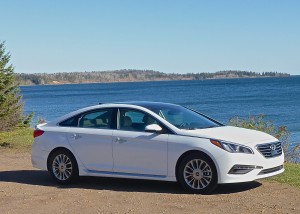
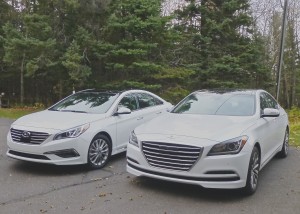
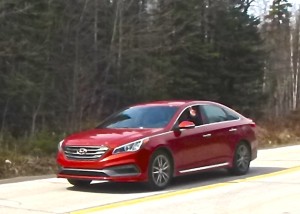
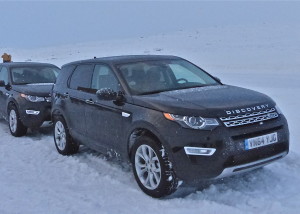
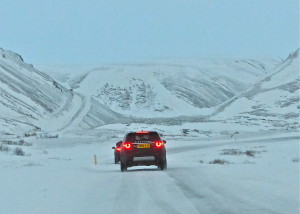



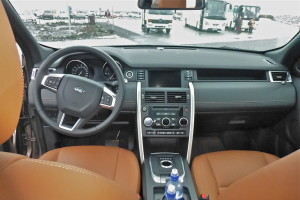
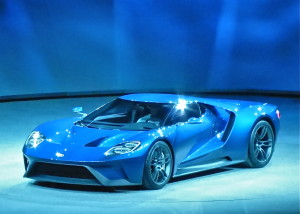
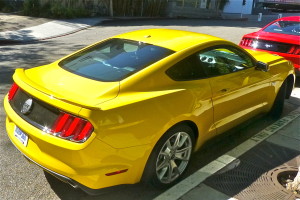
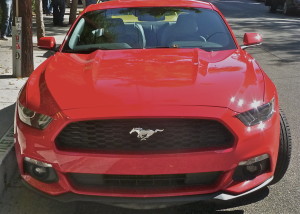
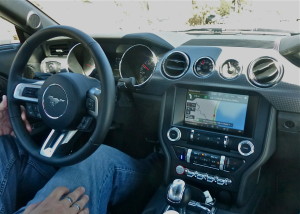
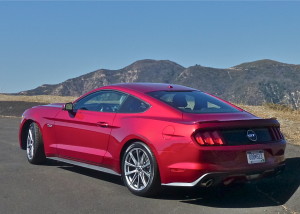
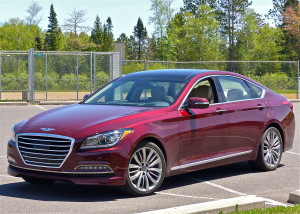
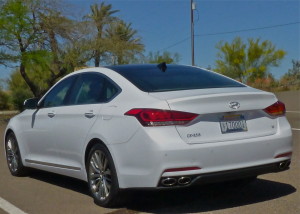
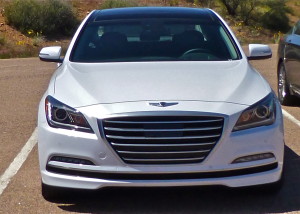
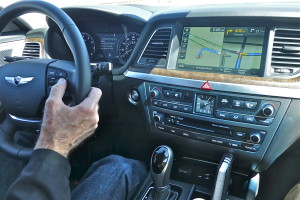
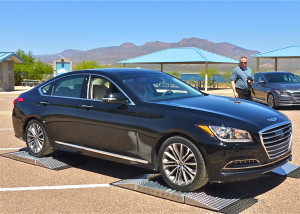
 John Gilbert is a lifetime Minnesotan and career journalist, specializing in cars and sports during and since spending 30 years at the Minneapolis Tribune, now the Star Tribune. More recently, he has continued translating the high-tech world of autos and sharing his passionate insights as a freelance writer/photographer/broadcaster. A member of the prestigious North American Car and Truck of the Year jury since 1993. John can be heard Monday-Friday from 9-11am on 610 KDAL(www.kdal610.com) on the "John Gilbert Show," and writes a column in the Duluth Reader.
John Gilbert is a lifetime Minnesotan and career journalist, specializing in cars and sports during and since spending 30 years at the Minneapolis Tribune, now the Star Tribune. More recently, he has continued translating the high-tech world of autos and sharing his passionate insights as a freelance writer/photographer/broadcaster. A member of the prestigious North American Car and Truck of the Year jury since 1993. John can be heard Monday-Friday from 9-11am on 610 KDAL(www.kdal610.com) on the "John Gilbert Show," and writes a column in the Duluth Reader.